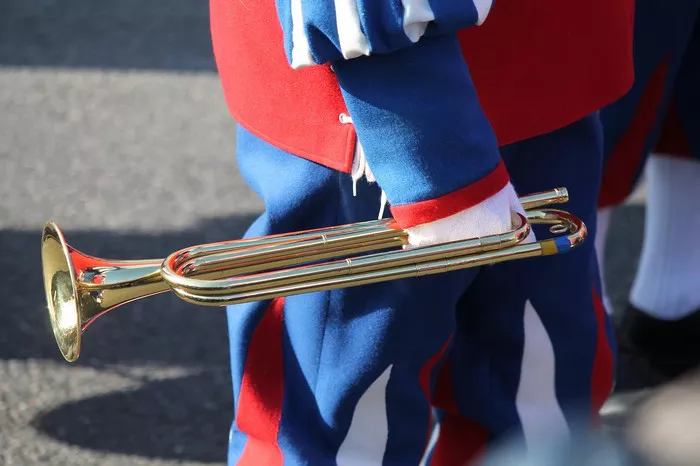The trumpet, with its rich history and timeless appeal, is a beloved instrument in the world of music. Learning how to hold a trumpet correctly is one of the fundamental steps towards becoming a proficient player. In this article, we will guide you through the proper technique for holding a trumpet, ensuring that you start your musical journey on the right note.
1. Understanding the Importance of Proper Trumpet Holding
The way you hold a trumpet is crucial for several reasons. It affects your ability to produce a clear and consistent sound, sustain notes, and maneuver through different playing techniques. Additionally, holding a trumpet incorrectly can lead to physical discomfort and strain, which may hinder your progress and potentially result in injury.
2. Basic Components of a Trumpet
Before we dive into the proper technique for holding a trumpet, let’s familiarize ourselves with the basic components of this brass instrument:
- a. Leadpipe: The part of the trumpet where the mouthpiece is inserted.
- b. Valve Casing: The casing that houses the trumpet’s valves.
- c. Valve Pistons: These are the three pistons that can be depressed to alter the pitch of the trumpet.
- d. Tuning Slide: The component that allows you to adjust the trumpet’s overall pitch.
- e. Bell: The flared end of the trumpet that amplifies the sound.
3. Proper Hand Placement
To hold a trumpet correctly, you should follow these steps for hand placement:
a. Left Hand: Begin by placing your left hand on the valve casing. Your thumb should rest on top of the valve casing, and your fingers should curl around the casing naturally. Ensure that your fingers are not too tight or too loose.
b. Right Hand: Your right hand should hold the trumpet’s leadpipe just above the valve casing. Your thumb should go under the leadpipe, while your fingers rest on top of it, forming a relaxed grip.
The key is to maintain a relaxed, but not overly loose, grip on the trumpet. This allows you to navigate the instrument with control and precision.
4. The Position of the Fingers
The way you position your fingers on the valve casing is crucial for proper trumpet playing:
a. First Valve Finger: This is your index finger, and it should be placed on the first valve button, closest to the mouthpiece. When you depress this valve, it lowers the pitch of the trumpet by a whole step (two half steps).
b. Second Valve Finger: Your middle finger should rest on the second valve button, which is in the middle of the valve casing. Depressing this valve lowers the pitch by a half step.
c. Third Valve Finger: Your ring finger should be positioned on the third valve button, which is the farthest from the mouthpiece. This valve also lowers the pitch by a half step.
It’s essential to keep your fingers close to the valves, allowing for quick and accurate valve fingerings. When you press a valve, do so firmly but without excessive force.
5. The Right Hand’s Role
The right hand’s position on the leadpipe also plays a vital role in your trumpet holding technique. Your right thumb should be under the leadpipe, providing support. The fingers should rest gently on top of the leadpipe, with your pinky finger curled under.
6. The Angle of the Trumpet
The angle at which you hold the trumpet is crucial for producing a clear sound and for comfort during playing. Here’s how to achieve the correct angle:
Hold the trumpet at a slight upward angle, with the bell pointing towards your lips.
Ensure that your mouthpiece aligns with your lips, allowing for a direct and centered airflow.
The proper angle not only enhances the quality of your sound but also minimizes tension in your neck and shoulders.
7. Relaxation and Posture
Proper trumpet holding is not just about hand placement; it also involves your overall posture. To maintain relaxation and comfort:
Stand or sit with a straight back.
Keep your shoulders relaxed, avoiding tension.
Maintain a natural curve in your fingers and avoid gripping the trumpet too tightly.
Tension in your body can hinder your performance and lead to discomfort. Regularly assess your posture and make necessary adjustments to maintain a relaxed and comfortable playing experience.
8. Consistent Practice for Proficiency
While learning how to hold a trumpet correctly is essential, proficiency in trumpet playing requires consistent practice. As you practice, pay attention to your hand placement, finger positioning, and posture. The more you practice these fundamental aspects, the more natural and effortless they will become.
9. Seeking Professional Guidance
If you are a beginner or aspiring to reach a higher level of trumpet playing, it’s advisable to seek guidance from a qualified trumpet teacher. A professional instructor can provide personalized feedback, correct any issues with your technique, and guide you through exercises and practice routines to improve your trumpet skills.
See Also: The 6 Role of the Trumpet in the Military: All You Need To Know
10. Conclusion
Learning how to hold a trumpet correctly is a fundamental step in your journey toward mastering this beautiful instrument. The technique outlined in this article is a solid foundation, but remember that consistent practice, guidance from a qualified teacher, and self-assessment are essential components of becoming a proficient trumpet player.
Proper trumpet holding not only enhances your playing but also contributes to your overall musical enjoyment. As you continue to develop your skills, you’ll discover the joys and challenges of this versatile and captivating instrument, allowing you to express your musical creativity and connect with audiences in a unique and powerful way.


